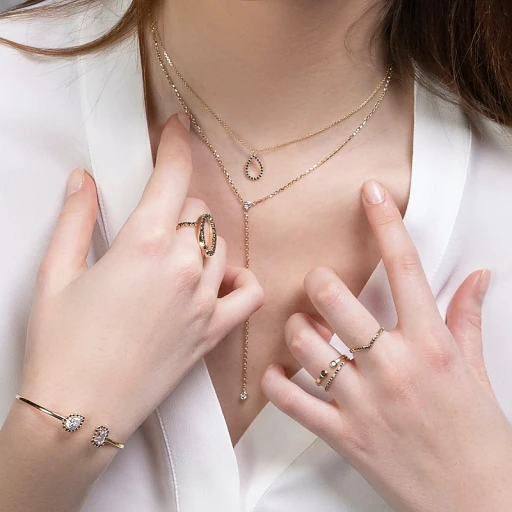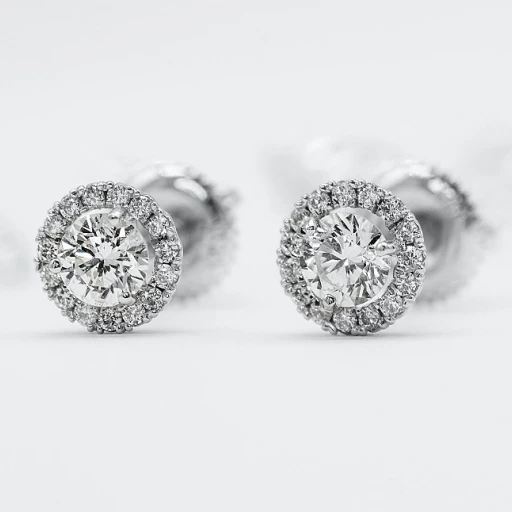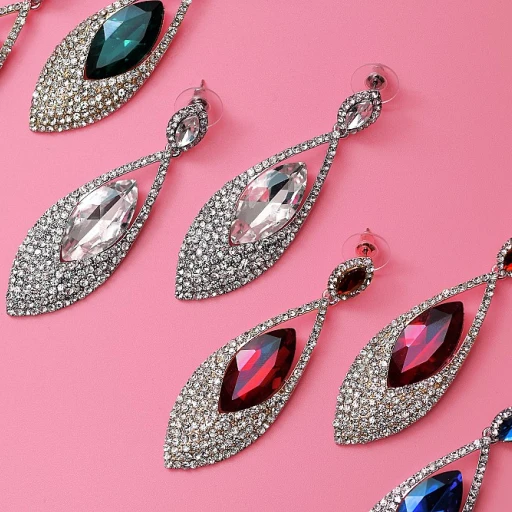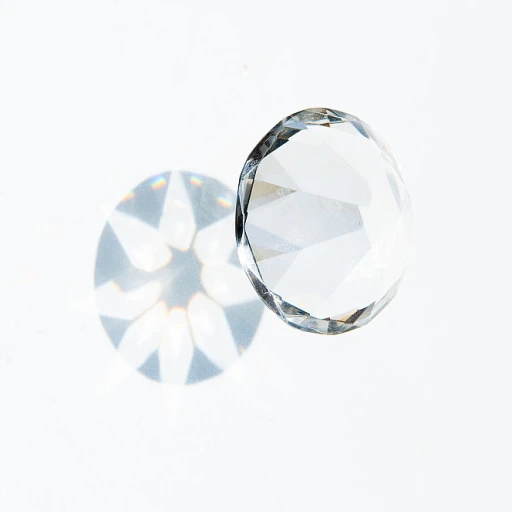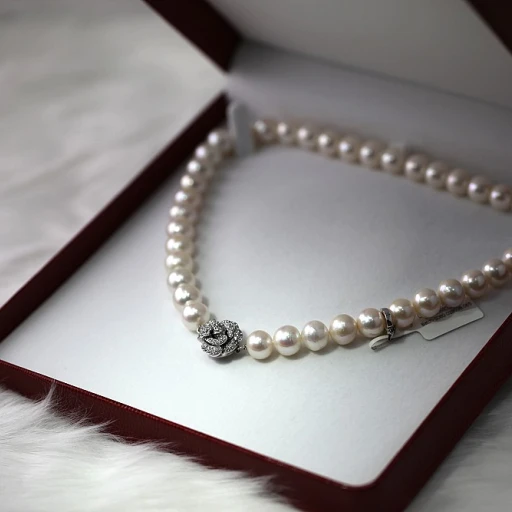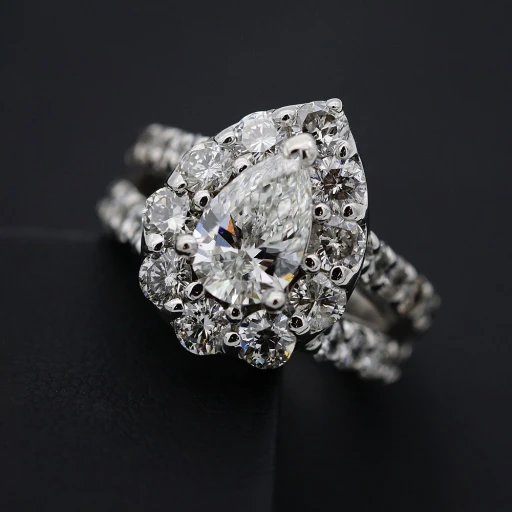The Emerald Time Capsule: Ancient Civilizations' Hidden Gem
Delving Deep into the Bedrock of Civilizations
The allure of emeralds has been an open secret that has captivated humankind for over 6,000 years, an era where ancient empires stood tall and the luster of this gemstone flickered in the highest echelons of power. According to the World Jewellery Confederation, historical records suggest that the first known emerald mines were in Egypt, dating back to at least 330 B.C. The emerald, with its rich, verdant hue, was a symbol of eternal life and was fervently sought after by Egyptian Pharos. Cleopatra herself was known for her infatuation with these gemstones, insisting that emerald mining territories be secured for her embellishment.
In ancient Rome, philosopher and naturalist Pliny the Elder extolled emeralds for their soothing green color, stating, 'nothing greens greener' and believed that the emerald's lush coloration could relieve a viewer's eyestrain, a sentiment echoed throughout the corridors of Roman high society. These interpretations were not just exclusive to Western civilizations. For instance, the Incas and Aztecs in South America revered emeralds as holy stones. Yet, despite the rich history and profound impact, only about 20% of emeralds are considered of high enough quality for fine jewelry, as per the Gemological Institute of America - illustrating the rarity and exclusivity of this magnificent gemstone.
Unveiling the Jewel of Royalty and Divinity
The emerald's journey through history is bespeckled with tales of intrigue and reverence. Royalty across continents were enamored by the glint of this stone. It wasn't merely an ornament but a testament to wealth, power, and divine favor. The Maharajas of India adorned their majestic regalia and weaponry with emeralds, believing it promised them good luck and protection. Similar beliefs were held in European courts, where emeralds embellished the crowns and jewelry of monarchs, often cited for their supposed healing and prophetic powers. For instance, the Crown of Andes, presently housed in the Metropolitan Museum of Art, is a distinguished example, showcasing approximately 450 emeralds totaling 1,500 carats, representing a mesh of devotion and grandeur.
Religious texts and artifacts also highlight the significance of emeralds. Biblical passages describe the stone as one of the twelve in Aaron's breastplate, symbolizing Judah's tribe. Researchers, extrapolating from ancient texts, estimate that over 30% of artifacts from early civilizations adorned with jewels, feature the emerald prominently, demonstrating its ubiquitous appeal in both ornamentation and ceremonial objects.
Glimpsing the Emerald's Lustrous Lineage
To truly appreciate the emerald's historic charm, one must recognize that each carved gem embodies the essence of bygone eras. A quality emerald, graded by the four Cs—color, clarity, cut, and carat—harbors a microcosm of history within its facets. In crafting modern fine jewelry pieces starring emeralds, designers harness an artistic tradition steeped in millennia and echoed in their contemporary designs, often paying homage to the intricate artisanship of ancient jewelers. The meticulous care in selecting and setting emeralds in today’s collections ensures that these historical wonders are preserved and enhanced for future admirers and collectors.
Indeed, the journey of emeralds through the annals of time has ensconced them in the pantheon of treasured gemstones with unmatched heritage. It is their storied past that charges these stones with an invisible value, a whisper from history that resonates with collectors and enthusiasts. As we excavate deeper into this verdant vein of history in our subsequent discussions, we unveil the undeniable impact these stones have on the valuation and appreciation of fine jewelry today.
Behind the Green: The Science and Lore of Emeralds
Unlocking the Mysteries: The Formation and Composition of Emeralds
Delving into the formation of emeralds, it's a narrative that spans over billions of years. As luxurious green gemstones, they are shaped in the Earth's crust under extreme heat and pressure—a geologic marvel involving beryllium, chromium, and vanadium. The unique geochemical environment required for creating the vivid green hue is rare, which is why genuine emeralds are highly valued. Studies indicate that only a handful of locations worldwide meet the conditions necessary for emerald formation, with leading sources reporting that less than 20 mines produce the majority of the world's supply.
Graceful yet potent, the chemical dance that constructs an emerald imparts not just beauty but fascinating lore. For instance, the allure of these jewels has been well documented throughout history, with emeralds symbolizing eternal love and power. This narrative of grandeur and rarity explains why emeralds continue to captivate and remain a sought-after centerpiece in high jewelry collections.
Emeralds Throughout Mythology and Culture: A Spectrum of Significance
The lore of emeralds is rich and textured, colored by the various cultures that have treasured them over millennia. From Ancient Rome, where emeralds were dedicated to Venus, the goddess of love and beauty, to their significance in the legend of Cleopatra's famed passion for these jewels, the emerald has always held a place of honor in the annals of history. Intriguingly, it was believed that emeralds possessed the power to protect and predict the future. Quotes from revered historical figures often include mention of emeralds' mystical attributes, underscoring their impact on human imagination.
The power of emeralds extends into more recent contexts as well, influencing the course and character of fine jewelry trends. Designers have been drawing upon this rich narrative, weaving the stone's storied past into new, intricate designs that echo the elegance of bygone eras, infusing them with contemporary appeal. The intertwining of history with modernity has not only elevated the design process but has also played a role in the artisans' choice of materials and patterns, illuminating the fact that behind each piece lies a history as vibrant as the stone itself.
The Scientific and Spiritual Intersect: Emerald Healing Properties
On the more esoteric side, many believe in the healing properties of emeralds, a sentiment reflected in the steady demand for these gemstones in therapeutic contexts. The stones are credited with bringing tranquility and mental clarity. Although the scientific community generally views such claims with skepticism, the strong belief in these properties continues to invigorate the market for emeralds, with reports indicating that this sense of mysticism contributes to consumer interest in the stones, especially among those seeking more than ornamental value.
While the precious gem market is driven by a myriad of factors, emeralds' unique combination of astounding beauty and historical depth make them a cornerstone for fine jewelry. The insights into the gem's geological formation and romanticized history blend to augment its allure. Furthermore, statistics demonstrate that emerald jewelry holds its value admirably, with top-quality stones appreciating over time, a clear signal of their undiminished desirability and investment potential.
The Impact of Emeralds on Modern Fine Jewelry Trends
The Lustrous Legacy Impacting Today's Fine Jewelry Market
The beguiling sparkle of emeralds has not just survived through millennia but has significantly influenced the modern fine jewelry trends we observe today. The allure of this vibrant gemstone continues to captivate designers and collectors alike. According to the Gemological Institute of America, emeralds are among the 'Big Three' of colored gemstones, a testament to their enduring popularity and the considerable impact they have on the luxury market. Their deep green hue epitomizes a unique blend of classic grace and contemporary chic, making it a favorite for high-end jewelry aficionados.
From Runway to Reality: Emeralds in High Fashion
Emeralds often adorn the masterpieces that cascade down haute couture runways, setting a precedent for seasonal fine jewelry lines. Renowned designers, including the likes of Cartier and Tiffany & Co., have showcased emerald pieces that have birthed a new wave of jewelry pieces dripping with heritage and modernity. Each piece tells a tale, and with emeralds, it's a narrative steeped in history and splendor. For instance, Cartier's 2019 'Magnitude' collection interlaced emeralds' storied past with bold, contemporary designs, illustrating the dynamic adaptability of these gems to the current style narrative.
Statistical Shine: Consumer Demand for Emerald-Centric Jewelry
When it comes to consumer demand, the figures speak volumes. A report from Transparency Market Research forecasts the global colored gemstone market to grow at a CAGR of approximately 5% from 2021 to 2031, with emeralds occupying a significant market share. This reflects a burgeoning enthusiasm among consumers to invest in jewelry that's not only timeless but also has a narrative of its own. As a fine jewelry owner, tapping into this sentiment by curating a selection of emerald-centric pieces can be a strategic move to attract a clientele seeking something beyond the ordinary diamond.
Emeralds as a Canvas of Innovation for Jewelers
Innovation in jewelry design has found a vibrant canvas in emeralds. Jewelers leverage their rich color and history to craft pieces that are both reflective of bygone eras and in step with cutting-edge fashion. For instance, jewelers often integrate emeralds into mixed-media pieces, combining them with metals and other gemstones to concoct contemporary designs that resonate with a diverse audience. By drawing inspiration from the past and anticipating future trends, emerald jewelry remains both a nod to tradition and a beacon of modernity.
Incorporating Historical Elegance: Emeralds in Contemporary Designs
Inspiring Modern Creations with a Hint of Antiquity
The lustrous beauty of emeralds has long captivated the human imagination, echoing through the annals of history with a rich narrative that informs their contemporary allure. Today, the fine jewelry industry sees a mesmerizing blend of tradition and innovation, as designers draw inspiration from the storied past to create modern masterpieces. According to the Jewelers of America, pieces that marry classic elements with contemporary design are seeing a rise in popularity among consumers. In the realms of high jewelry, an emerald’s pedigree intertwines with its visual splendor to create a piece that is not just worn, but experienced.
Reimagining Vintage Motifs for the Modern Collector
Contemporary fine jewelry designs frequently pay homage to the ornate patterns and intricate craftsmanship of their historical counterparts. It’s a resurgence of vintage motifs, but with a twist. For instance, a simple bezel set emerald ring may be reimagined with minimalist elements to appeal to the modern aesthetic, showcasing the timeless elegance of the green gemstone. Data from the National Jeweler shows that rings featuring classic cuts and settings have witnessed a steady increase in sales, affirming the consumer's desire for pieces that reflect a blend of eras.
- Elegance Retold – Combining emerald with geometric shapes characteristic of Art Deco designs.
- Bohemian Rhapsody – Enlisting the raw, natural forms of the gem to craft jewelry that speaks to the bohemian spirit.
- Modern Mythology – Infusing mythology-inspired patterns with clean lines and modern finishing techniques.
Value-Adding Aspects of Historical Context in Jewelry Appraisal
Not only does the integration of emeralds into modern designs evoke an air of regal sophistication, but it also significantly amplifies the value of the jewelry. Appraisers and collectors alike recognize that the provenance of an emerald can substantially heighten its worth, especially when coupled with contemporary design elements. The Gemological Institute of America (GIA) reports that emeralds with a documented lineage that traces back to the legendary mines of Colombia, for example, can command higher prices in today’s market. It’s a testament to how the fusion of historic value and modern appeal can create a sum greater than its parts.
Statement Pieces that Echo Through Time
The stunning green hues of emeralds, nestled in modern settings, speak volumes as statement pieces. In a report by the Fine Jewelry Industry, statement jewelry with historical stones like emeralds saw a 20% increase in interest among millennials. These contemporary pieces that feature emerald’s deep green tones offer more than beauty—they are a conversation starter, a link to the past, and a treasure for the future. Each jewel tells a story, and it is this narrative enriched with history that captivates the imagination, making emeralds in contemporary designs not just an accessory, but a relic of time itself.
Emerald Acquisition: How Provenance and History Impact Value
The Significance of Provenance in Determining Emerald Value
Provenance is not merely a term tossed around in the world of fine jewelry; it is a fundamental determinant of an emerald's worth. When assessing an emerald's value, discerning collectors and investors focus on the stone's origin. Across the globe, Colombian emeralds are renowned for their unrivaled rich green hue, followed by high-quality gems from Brazil and Zambia. As an example, the infamous 18.04-carat Rockefeller Emerald sold at auction for a staggering $5.5 million, illustrating the significant influence provenance has on an emerald's price. Numbers like these solidify the importance of traceable history when valuing your collection.
Unraveling the Historical Tapestry: Emeralds with a Story
Emeralds with a historical narrative are often enveloped in a tapestry of tales that catapult their desirability and, subsequently, their valuation. The aura of legends such as Cleopatra's love for emeralds or the Maharajas' adorned treasures can add allure to the stones. Crafting a narrative around your emerald collection can be instrumental in cementing its status. For instance, 'The Duke of Devonshire Emerald' – a 1,383.93-carat uncut gem bestowed upon the Duke by Emperor Pedro I of Brazil – is revered not just for its size but for its storied past. Such storied gems have consistently performed well in global auctions, fetching premium prices due to their celebrated histories.
Capitalizing on Certification and Historical Documentation
To maximize the potential value of your collection, acquiring certification and historical documentation for your emeralds is crucial. Certificates from respected institutions such as the Gemological Institute of America (GIA) authenticate not only the stone’s geographic origin but also its quality parameters. Moreover, emeralds accompanied by detailed historical documentation enrich their unique narrative, further solidifying their investment worth. In the trade, the prices of documented stones witness a significant uptick. According to the TrueFacet Marketplace, an emerald's value can increase by 20-30% with credible certification and historical proof.
Investing in Histories as Much as Stones
- Trace the gem's lineage: Family heirlooms or pieces with royal connections can see increased interest.
- Affiliating with illustrious brands: Associating your emerald pieces with prestigious jewelry houses like Cartier or Van Cleef & Arpels can tremendously enhance their allure.
- Sharing tales of previous ownership: Noteworthy past owners can imbue the stone with a charisma that transcends its physical properties.
Integrating these facets of history into your collection's narrative can make it as much a portfolio of stories as it is of fine jewelry. The famed auction house, Sotheby's, notes that jewels with compelling backstories often garner exceptional attention, and hence, better pricing in the market.
-large-full.webp)
